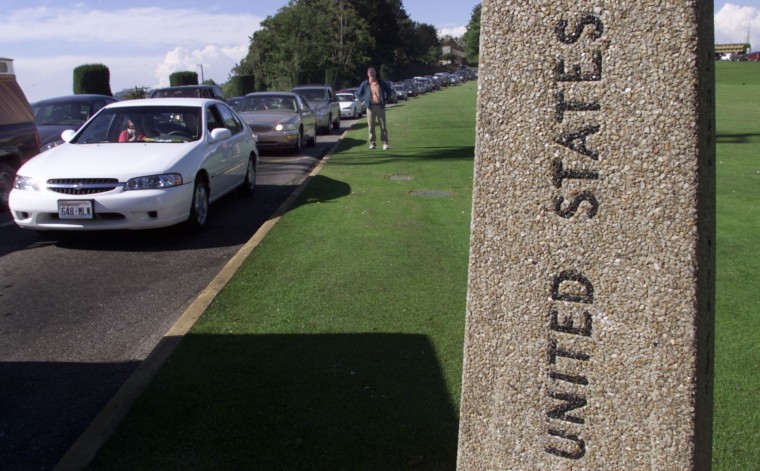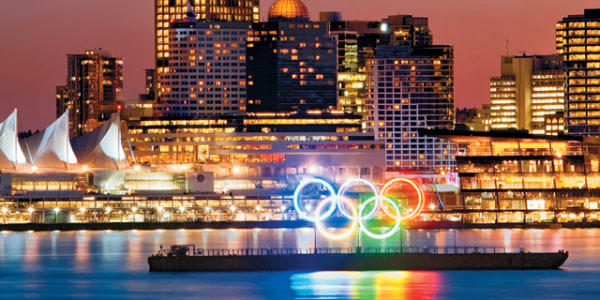Got docs?
If you’re planning on driving to the Winter Olympics later this month, having the appropriate documentation can mean the difference between having a gold medal experience and being disqualified before you even get to Vancouver.
Problem is, what constitutes “appropriate” is in the eye of the beholder.
Northbound: Increased traffic, unpleasant surprises?
For many U.S. visitors, the road to the Olympics will run up I-5 to a pair of border stations between Blaine, Wash., and Surrey, B.C., 30 miles south of downtown Vancouver. Commonly known as Peace Arch and Pacific Highway, the two stations will have 10 and seven northbound lanes, respectively. Two smaller stations are located farther east near the communities of Aldergrove and Huntingdon.
Between the four, the Canadian Border Services Agency (CBSA) is ramping up operations to handle approximately 1 million travelers during the Games — comparable, says CBSA spokesperson Hannah Mahoney, to traffic during a typical summer month. “We will continually monitor traffic and border crossing times and plan to increase staffing levels at our primary inspection lines and other areas to meet peak operational demands,” she said via e-mail.
Although much has been made of new U.S. rules requiring a passport or passport-equivalent documentation (more on that below), it’s often overlooked that U.S. citizens can still enter Canada with a birth certificate or other proof of citizenship, plus photo ID. It’s just not recommended due to the hassles those citizens will likely face when returning stateside.
But even with appropriate ID, a small fraction of Olympics-bound Americans may find crossing the border problematic. Under Canadian law, visitors can be refused entry if they’ve been convicted of lesser criminal offenses, including DUI, shoplifting and misdemeanor drug possession, in other jurisdictions. According to Mahoney, 18,000 of the approximately 66 million visitors who tried to visit the country in 2008 were deemed “criminally inadmissible.”
Slideshow 25 photos
Vancouver, B.C., 2010
The process for overcoming criminal inadmissibility is complicated — click here for more information — and can easily take a year or more. In select cases, visitors with black marks on their records may be deemed rehabilitated on the spot and allowed entry; nevertheless, they run the risk of getting stuck at the border with expensive, and suddenly worthless, tickets and lodging reservations.
Southbound: Documents make the difference
Heading south, i.e., driving from Canada back to the U.S., is another matter entirely.
The Games are expected to provide a major test for the Western Hemisphere Travel Initiative (WHTI), the last stage of which went into effect in June 2009. Under the new rules, travelers, including U.S. citizens, entering or re-entering the U.S. from Canada, Mexico, Bermuda or the Caribbean are required to present a passport or passport-equivalent documentation. Acceptable forms of alternative ID include:
- Passport card: A less-expensive, wallet-sized card that’s valid for land and sea crossings, but not air travel or travel to and from non-WHTI countries.
- Enhanced driver’s license: Currently being issued by Michigan, New York, Vermont and Washington state, these cards can be used under the same conditions as the passport card.
- NEXUS card: Designed for frequent border-crossers, this card is part of the government’s Trusted Traveler program. After undergoing an interview and fingerprinting, the card entitles travelers to pre-approval at the border via dedicated commuter lanes.
According to Mike Milne, spokesman for Customs and Border Protection (CBP) in Seattle, compliance rates with the new regulations have been above 95 percent. “Most people,” he says, “have gotten the message.” Those that haven’t can visit GetYouHome.gov for more information.
One thing you won’t find on the site, however, is the fact that if you’re a U.S. citizen and you show up at the border with pre-WHTI documents, e.g., a birth certificate and photo ID, you should still be able to get home.
“It’s just going to take longer because we won’t be able to clear them at primary,” says Milne. “We’ll have to establish their identity and citizenship through the documents they may have and through our various indices. It’s just so much easier if you have the right documentation.”
Get up to speed before you go
So, assuming you’re good to go — and come back — there are a few other things you can do to smooth your way to the Games:
- Visit the Going to Canada Web site for complete details on documentation, prohibited items, traveling with children and other information.
- Consider alternate routes. As longtime Northwesterners know, the Peace Arch crossing can be grindingly slow, especially since it leads to surface streets into Vancouver. Consider using the Pacific Highway crossing instead by getting off I-5 at Exit 275 (aka Truck Customs) to SR 543.
- Know the wait times. Highway reader boards on either side of the main border stations show current wait times. You can also visit the CBSA and CBP Web sites, both of which provide hourly updates for their respective facilities.
Finally, you could also consider taking the train. The Amtrak Cascades is currently running twice a day between Seattle and Vancouver as part of a Games-related pilot program. A few days are already sold out, but reservations during the Olympics are currently running around 60 percent, says Vickie Sheehan, marketing and communications manager for the train.
Even more enticing, she says, train travelers can relax for the duration of their trip because they don’t go through Customs until they reach the Vancouver train station: “It’s a much easier travel experience to go across the border on the train than it is by car.”
Rob Lovitt is a frequent contributor to msnbc.com. If you'd like to respond to one of his columns or suggest a story idea, .

